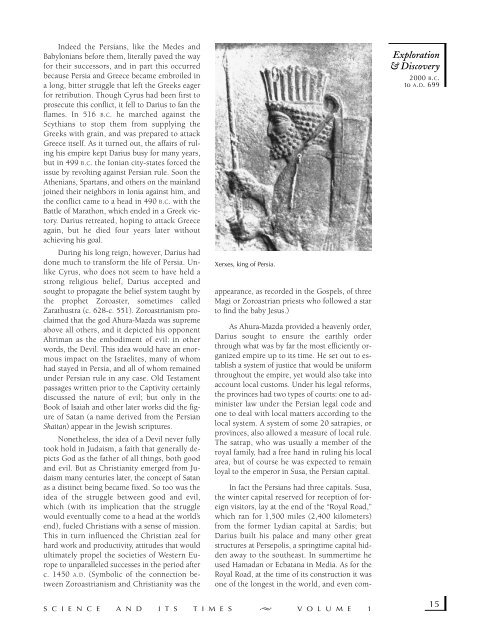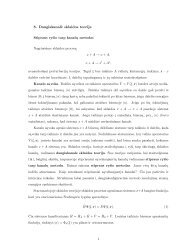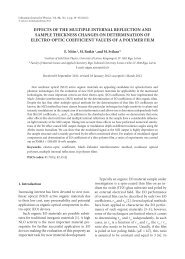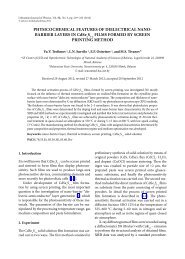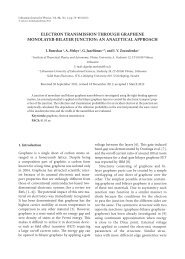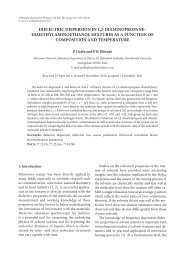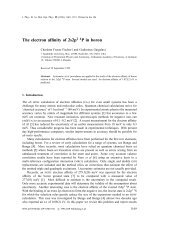Gale - Science and Its Times Vol 01 (2000 BC to AD 699).pdf
Gale - Science and Its Times Vol 01 (2000 BC to AD 699).pdf
Gale - Science and Its Times Vol 01 (2000 BC to AD 699).pdf
You also want an ePaper? Increase the reach of your titles
YUMPU automatically turns print PDFs into web optimized ePapers that Google loves.
Indeed the Persians, like the Medes <strong>and</strong><br />
Babylonians before them, literally paved the way<br />
for their successors, <strong>and</strong> in part this occurred<br />
because Persia <strong>and</strong> Greece became embroiled in<br />
a long, bitter struggle that left the Greeks eager<br />
for retribution. Though Cyrus had been first <strong>to</strong><br />
prosecute this conflict, it fell <strong>to</strong> Darius <strong>to</strong> fan the<br />
flames. In 516 B.C. he marched against the<br />
Scythians <strong>to</strong> s<strong>to</strong>p them from supplying the<br />
Greeks with grain, <strong>and</strong> was prepared <strong>to</strong> attack<br />
Greece itself. As it turned out, the affairs of ruling<br />
his empire kept Darius busy for many years,<br />
but in 499 B.C. the Ionian city-states forced the<br />
issue by revolting against Persian rule. Soon the<br />
Athenians, Spartans, <strong>and</strong> others on the mainl<strong>and</strong><br />
joined their neighbors in Ionia against him, <strong>and</strong><br />
the conflict came <strong>to</strong> a head in 490 B.C. with the<br />
Battle of Marathon, which ended in a Greek vic<strong>to</strong>ry.<br />
Darius retreated, hoping <strong>to</strong> attack Greece<br />
again, but he died four years later without<br />
achieving his goal.<br />
During his long reign, however, Darius had<br />
done much <strong>to</strong> transform the life of Persia. Unlike<br />
Cyrus, who does not seem <strong>to</strong> have held a<br />
strong religious belief, Darius accepted <strong>and</strong><br />
sought <strong>to</strong> propagate the belief system taught by<br />
the prophet Zoroaster, sometimes called<br />
Zarathustra (c. 628-c. 551). Zoroastrianism proclaimed<br />
that the god Ahura-Mazda was supreme<br />
above all others, <strong>and</strong> it depicted his opponent<br />
Ahriman as the embodiment of evil: in other<br />
words, the Devil. This idea would have an enormous<br />
impact on the Israelites, many of whom<br />
had stayed in Persia, <strong>and</strong> all of whom remained<br />
under Persian rule in any case. Old Testament<br />
passages written prior <strong>to</strong> the Captivity certainly<br />
discussed the nature of evil; but only in the<br />
Book of Isaiah <strong>and</strong> other later works did the figure<br />
of Satan (a name derived from the Persian<br />
Shaitan) appear in the Jewish scriptures.<br />
Nonetheless, the idea of a Devil never fully<br />
<strong>to</strong>ok hold in Judaism, a faith that generally depicts<br />
God as the father of all things, both good<br />
<strong>and</strong> evil. But as Christianity emerged from Judaism<br />
many centuries later, the concept of Satan<br />
as a distinct being became fixed. So <strong>to</strong>o was the<br />
idea of the struggle between good <strong>and</strong> evil,<br />
which (with its implication that the struggle<br />
would eventually come <strong>to</strong> a head at the world’s<br />
end), fueled Christians with a sense of mission.<br />
This in turn influenced the Christian zeal for<br />
hard work <strong>and</strong> productivity, attitudes that would<br />
ultimately propel the societies of Western Europe<br />
<strong>to</strong> unparalleled successes in the period after<br />
c. 1450 A.D. (Symbolic of the connection between<br />
Zoroastrianism <strong>and</strong> Christianity was the<br />
Xerxes, king of Persia.<br />
appearance, as recorded in the Gospels, of three<br />
Magi or Zoroastrian priests who followed a star<br />
<strong>to</strong> find the baby Jesus.)<br />
As Ahura-Mazda provided a heavenly order,<br />
Darius sought <strong>to</strong> ensure the earthly order<br />
through what was by far the most efficiently organized<br />
empire up <strong>to</strong> its time. He set out <strong>to</strong> establish<br />
a system of justice that would be uniform<br />
throughout the empire, yet would also take in<strong>to</strong><br />
account local cus<strong>to</strong>ms. Under his legal reforms,<br />
the provinces had two types of courts: one <strong>to</strong> administer<br />
law under the Persian legal code <strong>and</strong><br />
one <strong>to</strong> deal with local matters according <strong>to</strong> the<br />
local system. A system of some 20 satrapies, or<br />
provinces, also allowed a measure of local rule.<br />
The satrap, who was usually a member of the<br />
royal family, had a free h<strong>and</strong> in ruling his local<br />
area, but of course he was expected <strong>to</strong> remain<br />
loyal <strong>to</strong> the emperor in Susa, the Persian capital.<br />
In fact the Persians had three capitals. Susa,<br />
the winter capital reserved for reception of foreign<br />
visi<strong>to</strong>rs, lay at the end of the “Royal Road,”<br />
which ran for 1,500 miles (2,400 kilometers)<br />
from the former Lydian capital at Sardis; but<br />
Darius built his palace <strong>and</strong> many other great<br />
structures at Persepolis, a springtime capital hidden<br />
away <strong>to</strong> the southeast. In summertime he<br />
used Hamadan or Ecbatana in Media. As for the<br />
Royal Road, at the time of its construction it was<br />
one of the longest in the world, <strong>and</strong> even com-<br />
Exploration<br />
& Discovery<br />
<strong>2000</strong> B.C.<br />
<strong>to</strong> A.D. <strong>699</strong><br />
S C I E N C E A N D I T S T I M E S V O L U M E 1<br />
15


